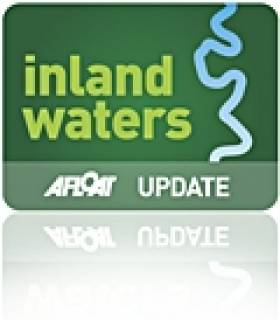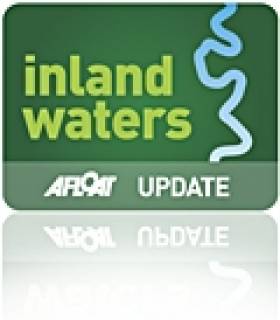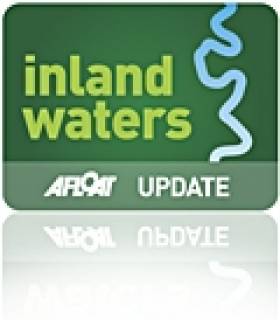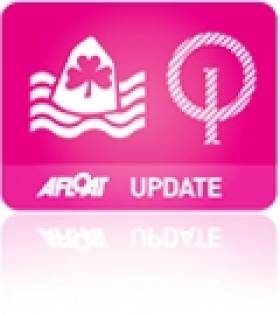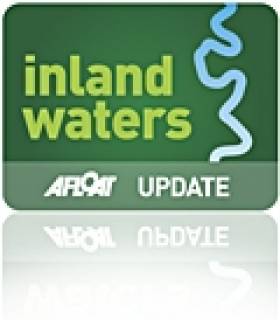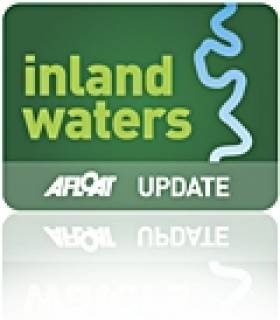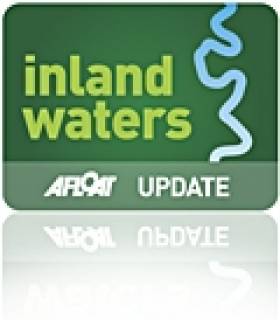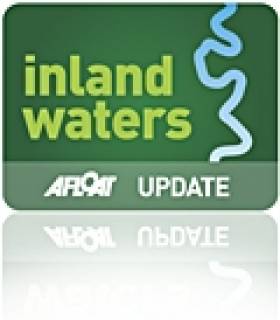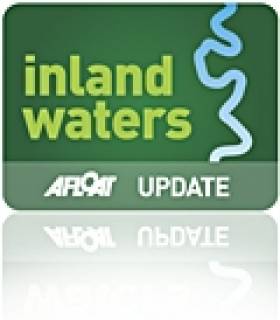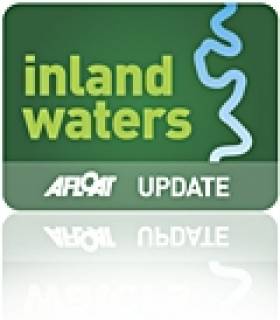Displaying items by tag: inland waterways
Powerboat Racing Garadice Lake – Haughton's Shore
Powerboat Racing will take place at Haughton's Shore, Garadice Lake on the Shannon Erne inland Waterway from Sun 18th July 2010 from 09.00 hrs to 18.00 hrs.
Through traffic will be catered for between races. Waterways Ireland has requested Masters of vessels are requested to proceed at slow speed and with minimum wash when passing this stretch of the navigation and to heed any advice or instructions issued by the race officials.
Warning of Low Water Levels on River Suck
Inland waterway Boaters on the Shannon Navigation should expect lower water levels than normal on the river Suck within 3km of Ballinasloe moorings. Deep drafted vessels should navigate with due caution. The full notice is attached.
15th Lock Closes for Emergency Repairs
The 15th Lock on the Grand Canal has been closed to navigation until Tuesday, 13th July in order to carry out emergency repairs to the lock gate. Every effort is being made to restore the lock to service as soon as possible.
200 Dinghies on Lough Ree for Optimist Championships
Waterways Ireland has issued an advisory to all masters and inland waterways users of the Shannon Navigation that the National Optimist Dinghy sailing event involving junior sailors will take place in and about Lough Ree Yacht Club (LRYC) on Sat 17th and Sun 18th July 2010 . Upwards of 200 sailing dinghies will be participating and will be making their way from LRYC to the racing course and back, on the southern part of Lough Ree.
Masters of vessels and boat are requested to proceed at slow speed and with minimum wash when passing the sailing fleet and to note any instructions or advice given by safety boats marshalling the race.
Shannon One Design Sailing Race from Athlone to Portumna
Waterways Ireland advises the Shannon One Design annual long distance sailing race on the inland waterways will commence at 10.00 hrs on Sat 26th from Athlone Lock, overnight at Banagher and finish at Portumna Bridge on Sun 27th Jun 2010. The Shannon Inspector of Navigation has warned masters to give way to vessels and boats navigating by sail only. Full notice is attached.
New Grand Canal Route Opens
A route that follows the Grand Canal on the inland waterways being opened today provides access for walkers and cyclists from West Dublin right into Dublin centre. Details of the new route – that cost Euro 25 million – is in this morning's Irish Times by Paul Cullen here.
Shannon Navigation - Roosky to Tarmonbarry
Waterways Ireland wishes to advise all masters and users of the Shannon Navigation that water levels have fallen in recent weeks. Masters of vessels, particularly those with deep drafts, are advised to proceed with caution in the area between Roosky Lock and Tarmonbarry Lock. For further information or advice please contact the Senior Engineer, North Shannon at 00-353-(0)719650898
Waterways Ireland Wins O2 Ability Award
Waterways Ireland has won the coveted O2 Ability Award for Environmental Accessibility for its work on inland waterways at an awards ceremony last evening in the Royal Hospital Kilmainham. The awards were presented by Ryan Tubridy, RTE and Caroline Casey founder of Kanchi, the company responsible for the awards. Awarded to public and private sector organisations with exceptional commitment to ensuring accessibility for all, there are also awards for leadership, retention, customer service, learning and development and recruitment.
Accepting the award on behalf of the staff of Waterways Ireland, John Martin, Chief Executive said ‘Waterways Ireland (pictured left below) has from the beginning integrated accessibility into our policies and our activity. Waterways Ireland is committed to working continuously to ensure that enjoyment of the waterways is a choice rather than issue of accessibility”

Caroline Casey founder of Kanchi stated “ The O2 Ability Awards honour leaders and organisations that recognise the ability of people with disabilities and value the role they play in their businesses. They promote a business culture that seeks, respects, values and harnesses difference for the benefit of both business and society. Well done, Waterways Ireland”
Waterways Ireland is a North/South body and is responsible for the management, maintenance, restoration and development of the inland navigable waterways for recreational purposes. Waterways Ireland manages over 1000km of waterway under its remit, many kilometres of it built over 300 years ago. Waterways Ireland’s accessibility policy has ensured accessibility built into every project since inception. The outcomes have been the installation of 1000’s of metres of accessible jetties and numerous service blocks with no barriers to persons with disability.
Waterways Ireland through its sponsorship programme has ensured that activities are open to all and through a comprehensive customer services programme has ensured that customers receive a high level of service regardless of whether the point of contact takes place at a lock, or in an office or waterside location.
Powerboat Racing on Upper Lough Erne
Powerboat Racing will take place at the Derryad Powerboat Club, Lisnaskea on Ireland's inland waterways on Sun 16 May 2010 from 11.00 hrs to 19.00 hrs. Through traffic will be catered for via the west side of Inishrath Island i.e on the Geaglum moorings side of the navigation. Masters of vessels are requested to proceed at slow speed and with minimum wash when passing this stretch of the navigation and to heed any advice or instructions issued by the race officials.


























